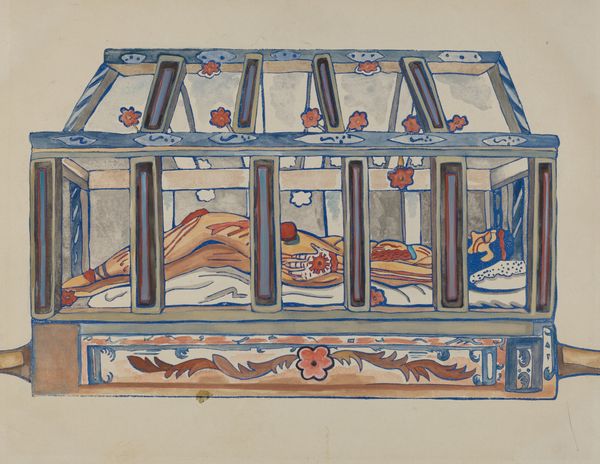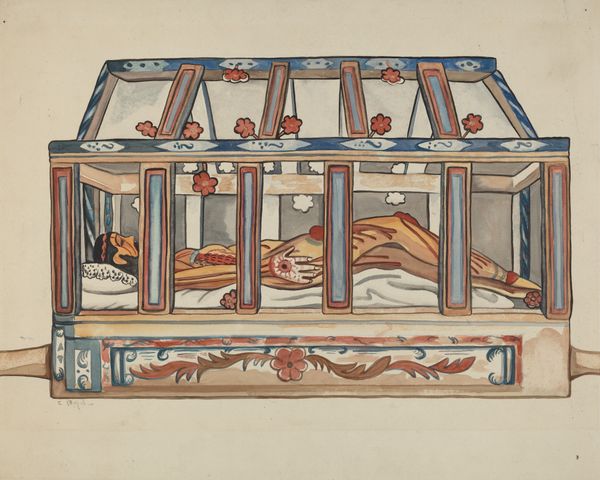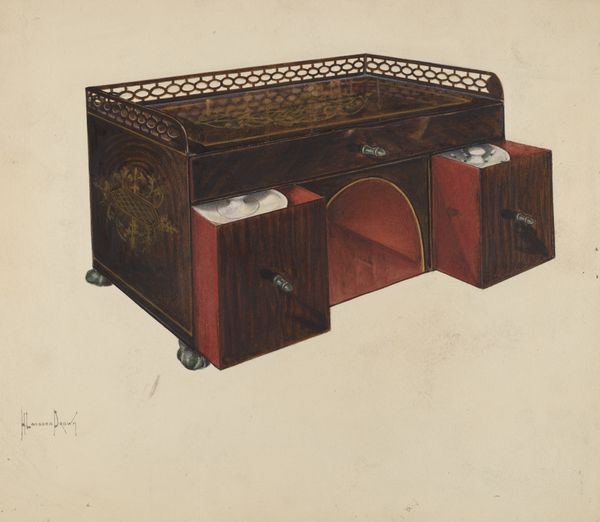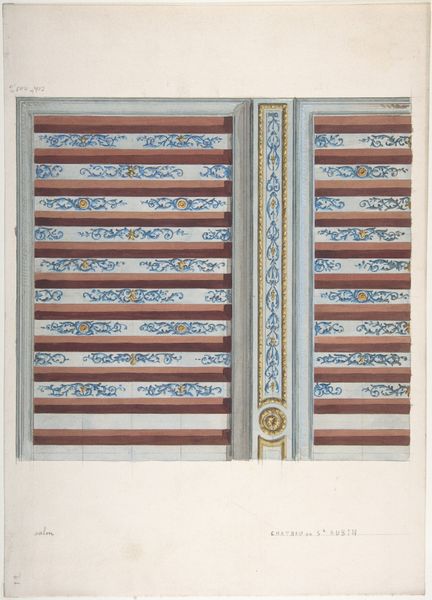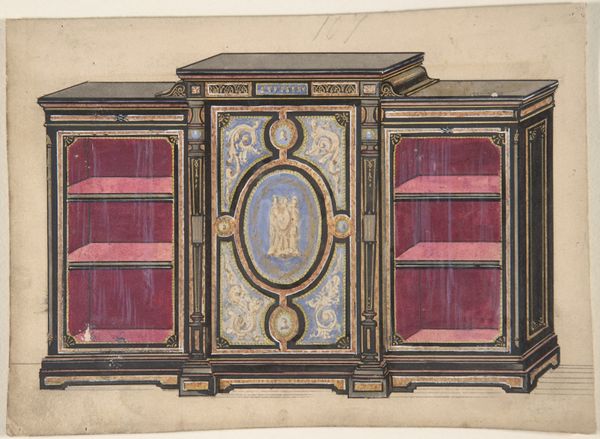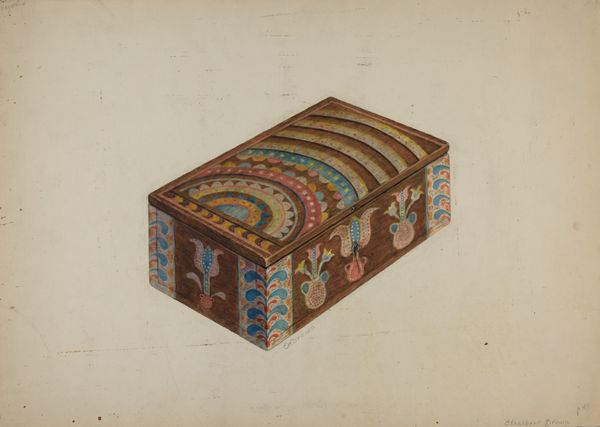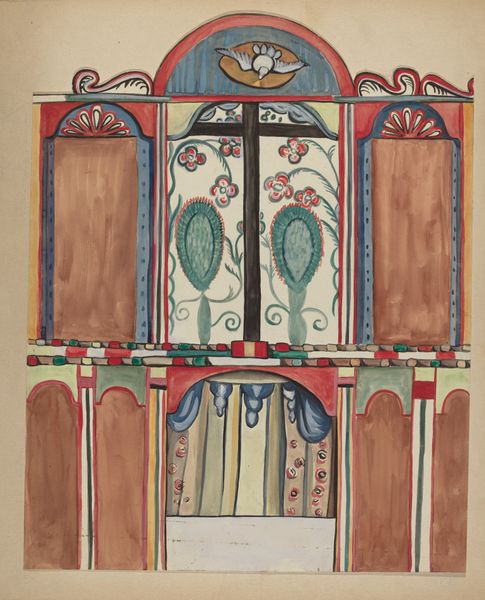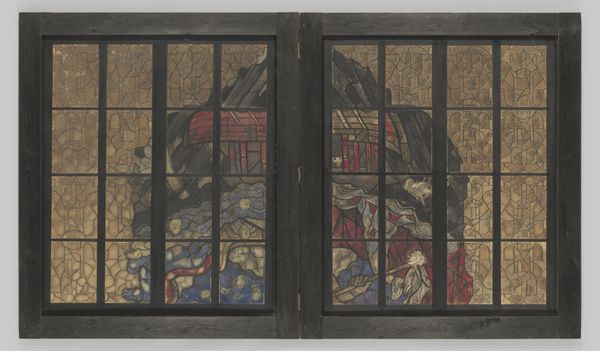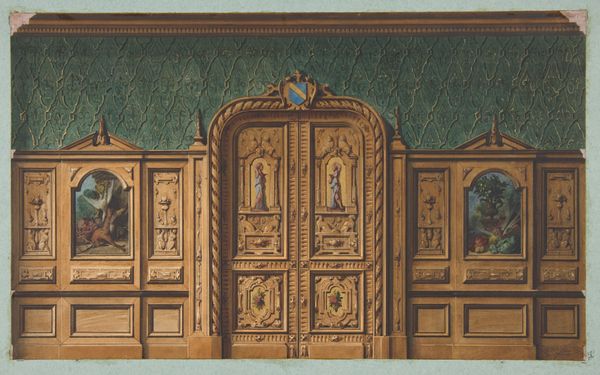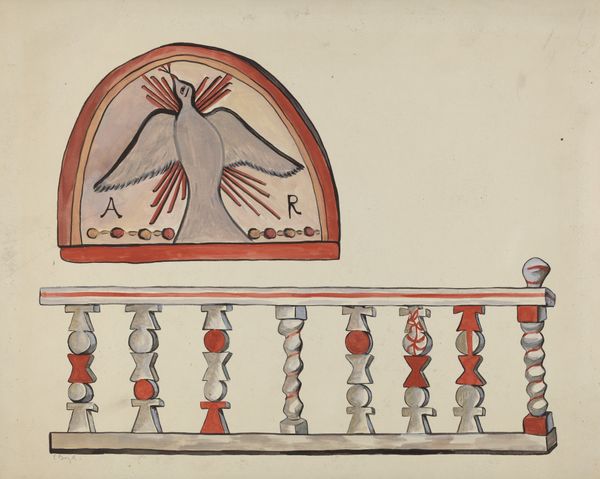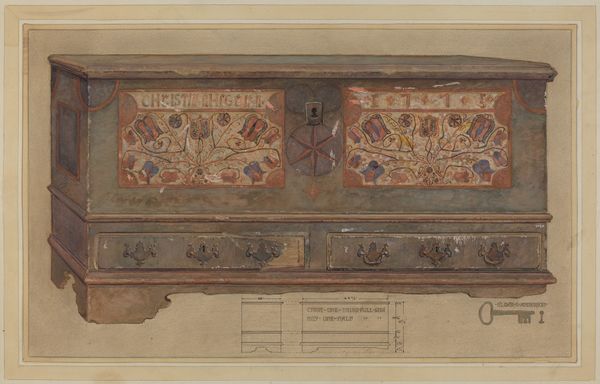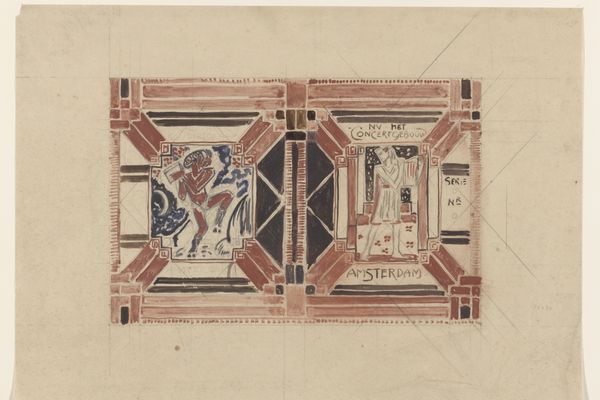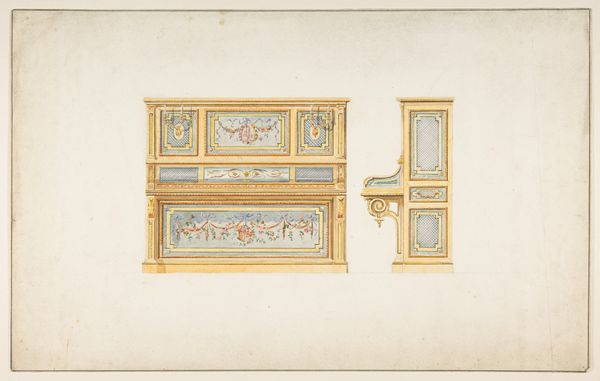
Plate 4: Christ in the Sepulchre: From Portfolio "Spanish Colonial Designs of New Mexico" 1935 - 1942
0:00
0:00
drawing, painting, watercolor
#
drawing
#
water colours
#
painting
#
landscape
#
watercolor
#
coloured pencil
Dimensions: overall: 28 x 35.6 cm (11 x 14 in.)
Copyright: National Gallery of Art: CC0 1.0
Curator: Here we have, from an anonymous artist, “Plate 4: Christ in the Sepulchre: From Portfolio ‘Spanish Colonial Designs of New Mexico’”, sometime between 1935 and 1942. The materials used are watercolor and colored pencil. Editor: My first thought is, it feels very…staged? It's beautiful, but the scene is somehow too neatly arranged for such a sorrowful subject. The color palette, with these vibrant blues and reds, contrasts sharply with the quiet repose of the figure. Curator: Staged is interesting, because this is depicting a very particular tradition, not just the crucifixion, but the placement of Christ's body in a glass case. We see those blooms even on the structure itself. I read this as a rendering of cultural devotion and its symbolic presentation more than an actual grief scene. Editor: Right, like the presentation *is* part of the point. The vibrant colors, the almost cartoonish depiction of blood, those carefully placed flowers… they are not so much hiding the death, as, perhaps, pointing toward what comes *after* it. A movement of seasonal symbolism as the blooms will decay as everything else comes to bloom in spring, the idea is just behind the hill! Curator: The sepulchre, which one might think of as a tomb, here almost functions as a reliquary. It is meant to preserve. Think also how those floral decorations resemble wounds, yet bloom as flowers - which is an intriguing parallel. Editor: Definitely, this connects it so richly to larger traditions. In Christianity, red frequently appears as the color of sacrifice, rebirth, and even love. These red "wounds", so purposefully displayed on the pale figure of Christ, transform from symbols of death to blossoms of life, speaking volumes about love triumphing over death. So moving how this presentation helps transmit its symbolic intent. It keeps this tradition vibrantly present. Curator: It seems so much of devotion is performative; from a theatrical offering to a quiet act of remembrance, how we embody our beliefs really matters, and how art captures that embodiment offers even more depth to our expression of values. Editor: Absolutely. Looking closely allows us to remember that what appears as stillness and ritual holds this incredible wealth of significance.
Comments
No comments
Be the first to comment and join the conversation on the ultimate creative platform.
